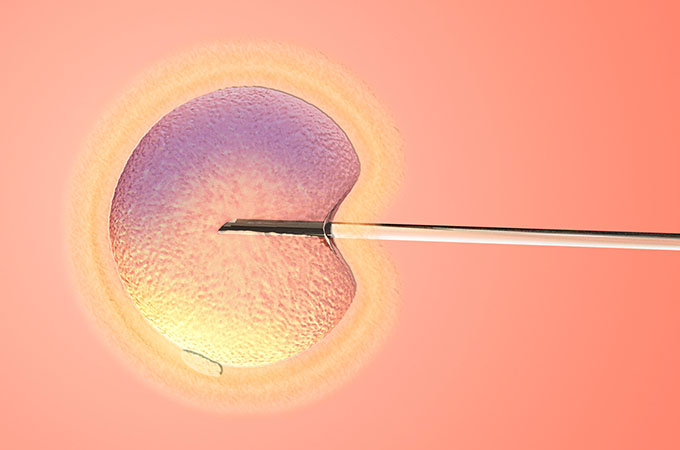Louise Brown was born 37 years ago and was the first human ever conceived from in vitro fertilization (IVF). At that time, infertility was rarely discussed openly and there were limited treatment options. Since then, major advances in fertility treatment have improved pregnancy success rates and made it more accessible and mainstream. Despite its increasing public attention, there are still many misconceptions about IVF.
Myth #1: IVF takes away eggs that you would otherwise have and diminishes your ovarian reserve.
At the beginning of each cycle, your body recruits a group of eggs that could get stimulated that month. Normally only one matures and ovulates while the others die. With IVF, all the eggs that are naturally recruited that month get stimulated so they all get an opportunity to mature. Nothing happens to all of the other eggs that are in the ovaries for subsequent menstrual cycles.
Myth #2: Ovarian stimulation causes cancer.
There are numerous well designed studies in the scientific literature that have addressed this specific concern. None have shown that ovarian stimulation with injectable gonadotropins causes cancer. There are some reports suggesting a possible association with borderline ovarian tumors; however, these malignancies are indolent (cause little or no pain) and have excellent prognosis (likely outcome) with preservation of fertility. In fact, the American Society for Reproductive Medicine (ASRM) considers it safe for an egg donor to donate eggs up to six cycles, meaning that the governing body over reproductive medicine and assisted reproductive technology (ART) deems it safe for ovarian stimulation to occur at least six times.
Myth #3: There is little control of ovarian hyperstimulation in IVF.
Choosing an experienced IVF center is important. There are simple ways to predict the right dose of medications. Monitoring visits allow for dose adjustments to be made in real time to control the ovarian response. Further, different medications can be used to facilitate an effective and safe release of eggs but dampen the rise of estrogen after egg retrieval. An experienced IVF center is skilled at prevention. It is extremely rare today for any patient with ovarian hyperstimulation to be hospitalized as it is easily and effectively managed.
Myth #4: There is a higher risk of multiple gestation (twins, triplets, or more) with IVF.
IVF is the ONLY fertility treatment that allows control for how many embryos are implanted. With other treatment such as oral or injectable medications with intercourse or insemination, there is absolutely no control. All of the eggs that have matured in an ovarian stimulation with intrauterine insemination (IUI) cycle, for example, have a chance of getting fertilized and becoming a pregnancy. There is a 10 percent chance of multiples per cycle with Clomid and up to a 25 percent chance of multiples per cycle with injectable gonadotropins.
Elective single embryo transfer (eSET) gives patients the same success rates when transferring one, carefully selected embryo without the significant risk of multiples present if you were to transfer two or more embryos. With experience, careful observations of outcomes, and improvements in embryo culture techniques, elective single embryo transfer (eSET) has become a very good option for patients. Patients can now have a healthy singleton pregnancy—removing the risks commonly associated with multiple gestation pregnancies.
The future of infertility treatment is today. With advances in technology and continuous research and innovation, we now have very effective ways to prevent ovarian hyperstimulation, reduce the risk of multiples, and choose the best and healthiest embryos to result in a pregnancy.
When it comes to fertility treatment, it is best to not allow the myths to influence your decision making. Learning the facts about IVF, understanding the success rates, and speaking to a fertility specialist about your options will provide you with the information you need to determine if fertility treatment is the right option for you.

Written by: Kara Nguyen, M.D., M.P.H. of Shady Grove Fertility’s Reading, PA and Harrisburg, PASCHEDULE AN APPOINTMENT
To learn more about common misconceptions about IVF or to schedule an appointment with one of our physicians, please contact our New Patient Center at 1-877-971-7755 or complete this brief online form.
At Shady Grove Fertility, we’re here to give you the caring support you deserve as you start or grow your family. As a leading fertility and IVF center of excellence, we offer patients individualized care, innovative financial options, over 30 accepted insurance plans, and pregnancy rates among the highest of all national centers. We offer patients the convenience of 19 full-service and 6 satellite locations across Maryland, Pennsylvania, Virginia, and Washington, D.C. More than 1,700 physicians choose Shady Grove Fertility to refer their patients, and more than 96 percent of our patients say they would recommend Shady Grove Fertility’s 35+ physicians to a friend. With 10 Shady Grove Fertility babies born each day, your dream of starting or growing your family are within reach.






